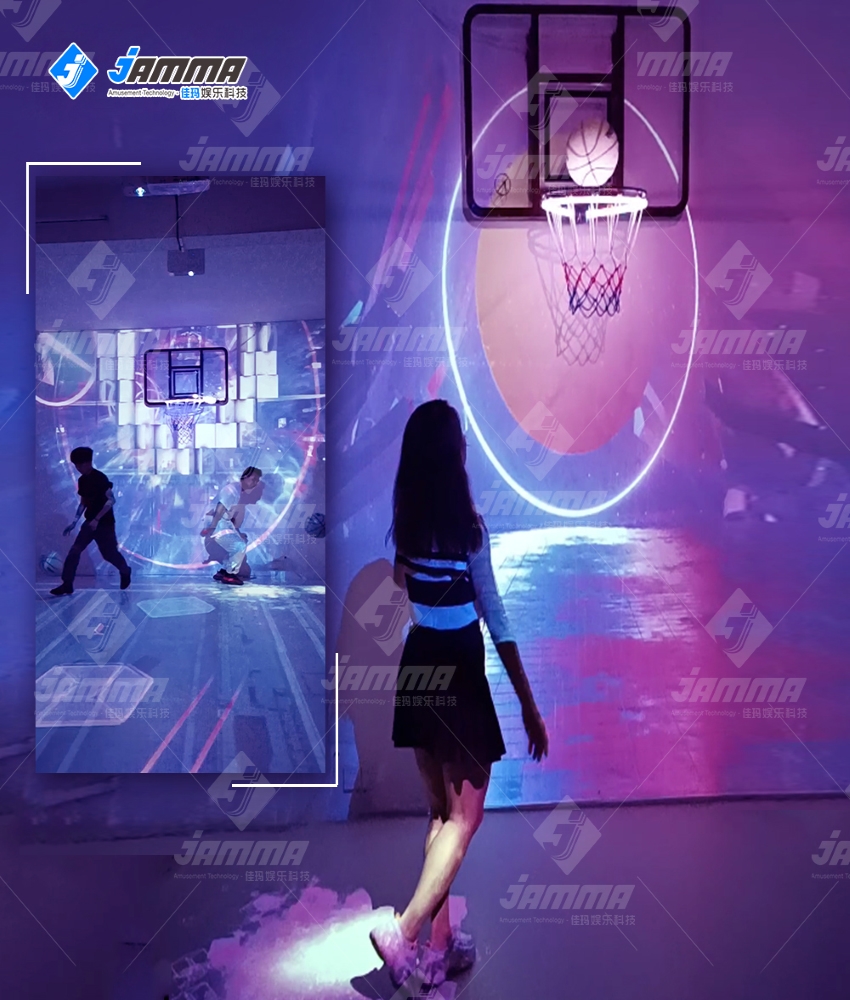Indoor Interactive Basketball System Application
An indoor interactive basketball system application can enhance the basketball experience by incorporating technology and interactivity into the game.
- Interactive Training:
- Skill development: Create interactive training modules for dribbling, shooting, passing, and other basketball skills.
- Real-time feedback: Provide users with instant feedback on their performance, including shot accuracy, ball-handling skills, and more.
- Virtual Coaching:
- Incorporate virtual coaching assistants or trainers to guide users through various training exercises.
- Customized workout plans: Offer personalized workout plans and progress tracking.
- Augmented Reality (AR):
- Use AR to superimpose virtual hoops, targets, or defenders in the user’s physical space.
- Combine AR with motion tracking to offer realistic gameplay experiences.
- Multiplayer and Social Features:
- Enable multiplayer modes for users to compete with friends or other users remotely.
- Social sharing: Allow users to share their achievements, scores, and training progress on social media.
- Game Modes:
- Create various game modes like one-on-one, three-point contests, or slam dunk competitions.
- Story mode: Develop a narrative-driven basketball game for a unique experience.
- Score Tracking and Leaderboards:
- Implement a scoring system to track user performance and display leaderboards.
- Encourage friendly competition and improvement by comparing scores with other users.
- Equipment Integration:
- Incorporate compatibility with smart basketballs or sensors that can track shot accuracy, force, and other metrics.
- Connect with IoT-enabled indoor basketball hoops for accurate scorekeeping.
- User Profiles:
- Allow users to create profiles, set goals, and track their progress over time.
- Collect and display statistics related to their gameplay and training.
- In-App Purchases and Rewards:
- Offer virtual currency or in-app purchases for users to buy equipment, clothing, or special abilities for their virtual basketball avatars.
- Reward users for completing challenges and reaching milestones.
- Customization Options:
- Let users customize their avatars, basketball courts, and virtual basketballs.
- Provide a range of options for users to personalize their virtual basketball experience.
- Feedback Mechanisms:
- Include features for users to provide feedback and suggestions for improving the application.
- Regularly update the app based on user input to enhance the user experience.
- VR Integration (optional):
- If your application targets advanced users, consider integrating virtual reality for a fully immersive basketball experience.
- Spectator Mode (optional):
- Allow users to watch games or training sessions of others, promoting a sense of community and learning from others’ performances.


Remember to optimize the application for different platforms, including mobile devices, tablets, and PCs, to reach a broader audience. Additionally, make sure to focus on user engagement and provide continuous updates to keep the application fresh and exciting for users.

Comments
Post a Comment